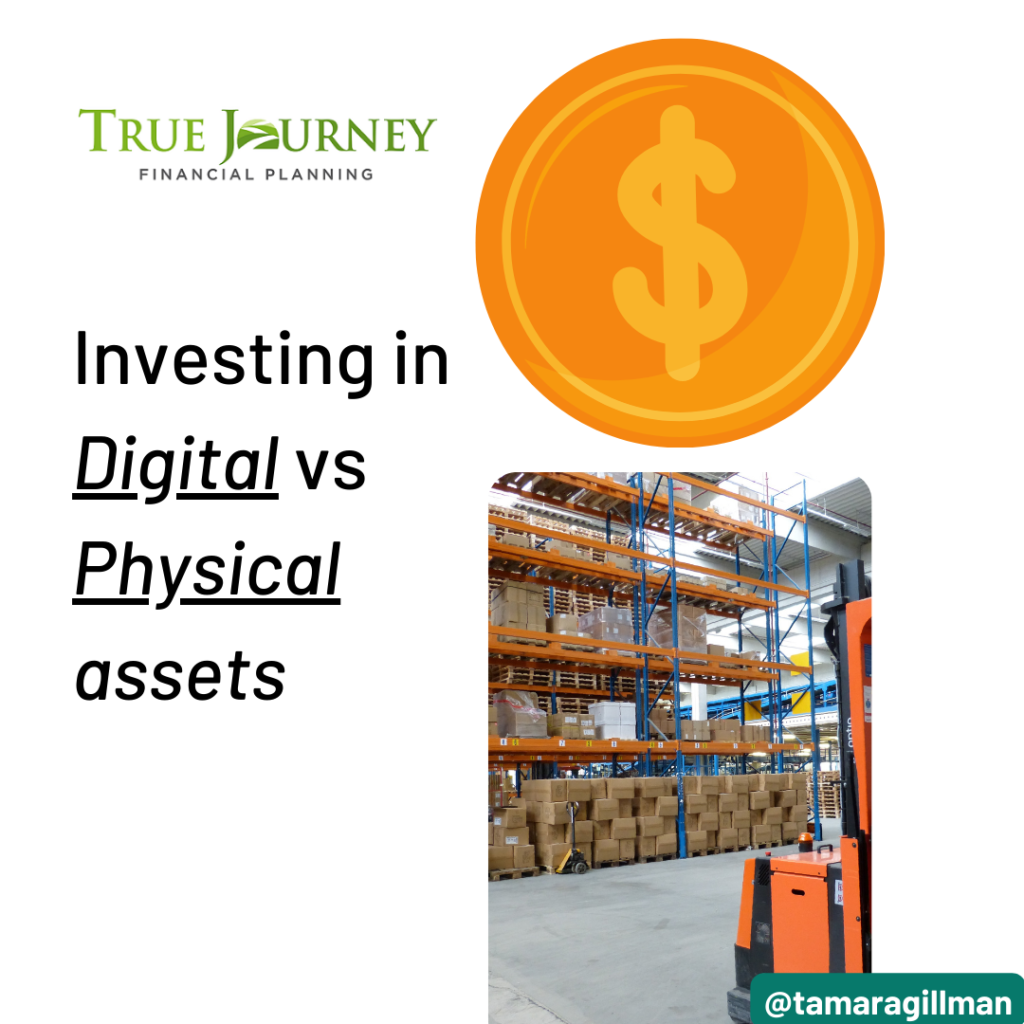
Not a day goes by where we don’t hear about the topic of bitcoin in the news, from friends or family, or on social media. The past few years have seen an increase in the popularity of digital assets such as cryptocurrency and Non Fungible Tokens (NFTs). Direct shares and managed funds are also digital assets.
However, this does not diminish the value of physical assets such as property, gold, and cash. There are certain societies in the world that accumulate gold because it is a status symbol. On the other hand, Australians love to invest in property.
Diversification is a key aspect of investing and therefore it is important to look beyond investment properties and consider other asset classes through which to spread your risk. With easy access to shares, managed funds and crypto, there is now a buffet of investment options to choose from, albeit with caution.
Let’s look at some differences between digital vs physical assets.
𝐃𝐢𝐠𝐢𝐭𝐚𝐥 𝐀𝐬𝐬𝐞𝐭𝐬
Similar to physical assets, they give you ownership of an asset but they are intangible, just like a JPEG image or PDF file. Shares, managed funds, and cryptos are owned, stored, and recorded in a digital format.
𝐏𝐫𝐨𝐬
Transaction costs – Usually, brokerage or commissions on buying and selling digital assets is much lower than on assets like property.
Liquidity – You can buy and sell them instantly on the internet with just a few clicks.
Fractional ownership – You can now buy a fraction of a share or a bitcoin on a trading platform. Common investors now have access to investment opportunities that were previously available only to large institutions.
𝐂𝐨𝐧𝐬
Fear Of Missing Out (FOMO) – Given the increase in popularity of crypto and shares along with their easy availability, people are trading on them simply to be a part of the hype rather than conducting their own research.
Security – Storing and securing digital assets is becoming increasingly important as your account can be hacked into and you can lose your valuable assets. Even though an asset like crypto which is backed by blockchain technology is not hack-proof.
These assets are very volatile, so should be considered as a very long-term investment and only invest the money you don’t mind losing.
Approach with caution!
𝐏𝐡𝐲𝐬𝐢𝐜𝐚𝐥 𝐀𝐬𝐬𝐞𝐭𝐬
Owning a physical asset such as property, gold, cash or even collectibles is not a new concept. They are tangible assets that give us a sense of security because we can see, touch, and feel them.
𝐏𝐫𝐨𝐬
Acceptability – Given the history behind these assets, they are easily accepted as a form of asset in all parts of the world.
Usage – You can live or holiday in a property, or wear gold jewelry as these assets can be used for enjoyment purposes too.
𝐂𝐨𝐧𝐬
High barrier to entry – There are high-cost barriers to purchasing physical assets such as building a 10% – 20% deposit prior to applying for a loan to purchase a home. These assets are limited in nature making them expensive to acquire.
Liquidity – Apart from cash, other physical assets are not very liquid. It can take months to sell a property. Also, you cannot sell only the bathroom of your house if you need urgent cash.
𝐍𝐞𝐱𝐭 𝐒𝐭𝐞𝐩𝐬
When deciding where to invest your hard-earned money, it is important to consider your life goals, age, current financial situation, risk appetite (how you will handle the extreme ups and downs), and the most important thing – something that will make you sleep peacefully at night.
You should consult professionals including a financial adviser to help navigate you through the different investment options that suit your situation.
